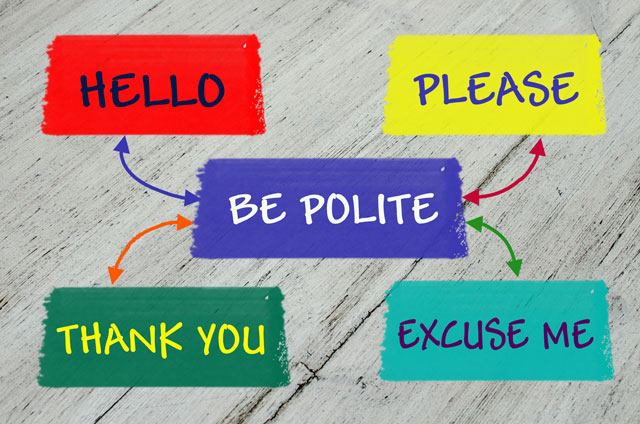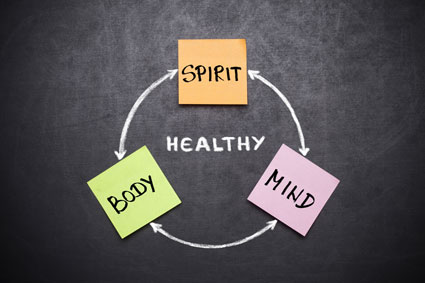A large part of the positive parenting approach is about effectively guiding children's behavior. In fact, many books and articles in the positive parenting literature are devoted primarily to positive discipline. In this article, we will cover the importance of appropriate behavior and the mechanisms underlying best practices.
The Importance of Appropriate Behavior
Behavior is used to communicate needs and wants and the ways we go about getting those met. Human beings are decidedly social. We live in, and depend on, our social group. If we think back to positive psychology, this isn't just for physical survival, but for fulfillment and happiness. To get these benefits, we have to behave appropriately. This means getting along with others, controlling our emotions and actions, making good choices, and having the tools to put mistakes right. What this amounts to is we have to be socialized. This is where parents come in!
The Parents' Role in Socialization
While babies come into the world primed to connect socially, they don't know the full rules of the game. Parents are the primary teachers of these rules. How parents choose to handle this role determines just what children learn. One primary decision point is the level of direct involvement in guiding children's behavior. The second is whether to use discipline or punishment to do so.
Passive vs Active Parenting
Passive parenting. Passive parents are very permissive about guiding children's behavior. Expectations for children to behave appropriately are lacking. Limits are rarely set, and even less rarely enforced. However, children learn behaviors whether directly taught or not. What children learn from passive parents is that anything goes and to get one's needs met, one only has to demand.
Unfortunately, this isn't serving the child well. Young children don't have the mental or emotional capacity to regulate themselves. When expected to do so, this causes them anxiety. Further, when they begin to interact with other adults and peers, they soon find out their behaviors don't get them what they want. Additionally, many such kids have an inflated sense of entitlement, often leading to being disliked for being self-centered and demanding.
Active parenting. When some people hear the term positive parenting or discipline, they take this to mean being permissive. However, this isn't the case. That's passive parenting. Active parenting is aligned with positive parenting. It centers on expectations and setting limits that are appropriate. Parents have beliefs about what children can and should do that match their capabilities. This is most often based on the maturity/age level of the child.
For example, as children grow older and more mature, parents expect them to do more for themselves, like making their own snack, or completing homework independently. Children can contribute more to the running of the household. For instance, a preschooler is expected to clean up her toys by putting them in a toy box, while a middle-schooler is expected to put his belongings away, make his bed, and dust and vacuum his entire room.
Such expectations are related to social-emotional areas as well. Toddlers aren't expected to share, but preschoolers are. School-age children aren't expected to negotiate conflicts with peers as well as adolescents are.
Cognitive maturity is considered as well. For example, younger children aren't expected to anticipate the consequences of their actions as well as older children. For instance, a second-grader who does poorly on a quiz is less likely to make the connection to not studying than a fifth-grader.
The passive parent matches most with the permissive parenting, and the active with the authoritative. It should be noted how the two other parenting styles attend to having expectations. These too are not well matched to children's abilities, are intrusive, and therefore, cause difficulty with behavior. In the indulgent style, parents underestimate children's abilities; they don't believe children can do as much as they can at various ages. Children do not get the opportunity to express their competence. In the authoritarian style, parents have expectations for what children can do -- above their abilities. These children's efforts are never "good enough" for the parent, making the child feel inadequate.
Setting reasonable limits is a vital part of active parenting. Such limits are clearly stated, match the child's abilities, and parents give acceptable choices, within the limits. For example, the reasonable limit clearly stated is that a toddler will eat a healthy snack, but parents allow the child to pick between two nutritious choices. The reasonable limit is that a teen can go out with friends on the weekend, and the choice is either Friday or Saturday night.
Indulgent parents, similar to permissive parents, don't set limits or give appropriate choices. Rather, children are allowed to do what they want and the parent encourages and accommodates. Authoritarian parents have an abundance of limits with no choice. These are intended to control the child.
Discipline vs Punishment
Discipline refers to firmly, but compassionately, guiding behavior through teaching and training. Conversely, punishment is about inflicting a penalty for a behavior in a harsh manner, with the intent that someone suffer. It almost goes without saying, but positive parenting supports discipline over punishment. Both research and practical experience show discipline is preferable to punishment for shaping desired and accepted behaviors to socialize children.
With punishment, several things typically happen. The behavior usually comes back when the punisher is not present, and children quickly learns to avoid the parent who is a punisher. Punishment doesn't teach the child what behaviors to do instead. Therefore, they don't get to practice these optimal behaviors and eventually do them independently to manage themselves well. Finally, punishment has additional negative emotional impacts on children, such as feelings of worthlessness and shame.
Discipline, on the other hand, is much more effective for promoting positive behaviors and having these "stick." Children know what the positive behaviors are that they should do, they have opportunities to practice and refine them, and are encouraged to do these independently. Discipline actually promotes a close, healthy parent-child relationship, because children have a need for appropriate limits and positive guidance and limits. All of this leads them to feel competent and accepted.
Discipline and Babies
Babies don't need discipline in the traditional sense, because they don't have the cognitive, social, or emotional maturity to misbehave. However, setting limits should begin, and mainly revolves around safety, especially when babies become mobile. This sets the stage for positive, effective discipline when it's time.
Effective Positive Discipline
The principles of behaviorism are fundamental to determining what behaviors children will engage in. The area most applied in using positive discipline is reinforcement. Knowing the difference between positive, negative, intermittent reinforcement, and extinction is very useful.
Reinforcement in General.
Reinforcement is any stimulus (this can be anything) that increases or decreases the chances that a behavior will result. The stimulus is presented and a behavior happens or doesn't happen, (meaning it is suppressed). The more powerful or meaningful the stimulus, the more likely the behavior will happen frequently, or that it will stop. This means it's been reinforced.
While in many instances we can predict what a successful reinforcer will be, until it's tried, it's uncertain. If it increases or decreases the behavior, then by definition it's a stimulus and reinforcement has occurred. Both desired and undesired behaviors can be reinforced. Some behaviors get reinforced very quickly, while others take longer. Next let's break out reinforcement, which can be positive or negative.
Positive Reinforcement
Positive reinforcement is when the stimulus increases the behavior. Positive doesn't mean pleasant, although it can be; it means an increase in this case. As mentioned, a positive reinforcement can increase desirable or undesirable behaviors in the child.
Let's begin with positively reinforcing a desirable behavior. A child eats a balanced meal and then asks for a cookie. This is a desirable behavior. The parent gives the child a cookie. The child asks for a cookie in the future only after eating a balanced meal.
Now, let's take this example in a slightly different scenario. A child wants a cookie right before dinner. This is an undesirable behavior. The parent gives the child the cookie and says, "Just this once," thinking this undesirable behavior will stop in the future. However, the next night the child again asks for a cookie right before dinner. This is because the child was positively reinforced with the stimulus of a cookie for this undesirable behavior. Here's a case where the positive reinforcement was pleasant to the child, however unpleasant the outcome to the parent.
Now, let's look at another example, where undesirable behavior is positively reinforced so it increases, but where the stimulus is negative. A classic scenario is a child wants parental attention and can't get it. The child may even try to do so in a desirable way first, but is ignored. The child then does an undesirable behavior, maybe begins a tantrum, makes a mess, breaks something, or slams a door. At this point, the parent gives the child attention by yelling at the child. The child in future acts out when he/she wants attention. This is because they've been positively reinforced for this undesirable behavior, even though the stimulus is unpleasant -- the parent yelling.
Parents therefore need to be very thoughtful and careful about what behaviors they positively reinforce in their children. In positive discipline, the advice is to pay careful attention to times the child engages in desirable behaviors and then positively reinforce those.
Rewards vs Encouragement as Positive Reinforcers
Rewards can be things like food, toys, stickers, or money. They can also be privileges, like being allowed extra time on the playground, or to spend one's allowance on a concert. Rewards are considered extrinsic, which means external to the child. While getting rewards is pleasant for children, if overused children make the association that good behavior always or should come with something they �get'.
In positive discipline, the emphasis is on being selective with rewards, but generous with encouragement. Encouragement differs from rewards in that it boosts the child's desirable behaviors by the parent acknowledging the child for desirable behaviors with non-tangibles.
This is often in the form of praise such as "You did a great job washing the car --I can't wait to drive it now," or, "I noticed you cleaned your toys up without a reminder. I'm proud of the way you're helping keep our home clean and organized," or, "I know it was really hard for you to not be scared and go through with that audition. That was really brave!"
Encouragement can also be non-verbal. Hugs and pats on the back, high-fives, thumbs- up, even a smile can all be encouragement and serve as a positive reinforcer. Children keep up these kinds of behaviors in order to keep the encouragement coming!
The art of the compliment. Before we move on it's important to talk about compliments and praise. One of the behaviors parents don't want to reinforce in their children is a sense of superiority and entitlement. This has been found to be present in children when their parents "overvalue" them.
This happens when parents give kids excessive, inflated, and often undeserved praise; for example putting in minimum effort, but being praised because it is some effort at all, or telling children they are better or smarter than other children. Children have a rude awakening when they don't receive this same kind of praise from other adults and peers.
Negative Reinforcement
Negative reinforcement is removing a stimulus that is unpleasant after the desired behavior occurs. The chances are then better that the desired behavior will keep happening and the undesired will stop, so the unpleasant stimulus stays absent. Let's look at some examples.
A teen has broken curfew and now isn't allowed to stay out as late as before. The curfew, which is the unpleasant stimulus, stays in place until the teen comes home at the new time for one month. The teen increases his or her coming-home-on-time behavior in order to have the curfew removed.
A middle-schooler hasn't been practicing the flute on her own. Her mom now sits with her while she plays, which the child does not like. The child increases the behavior of practicing her flute without reminders in order to remove her mother monitoring her, which is the unpleasant stimulus.
In positive parenting, the preference is very much on positive reinforcement over negative reinforcement. This is because with negative reinforcement, a child is subjected to something unpleasant.
Intermittent Reinforcement
It turns out when we don't know exactly when our reinforcement will come, we more diligently keep up our behaviors. This is called intermittent reinforcement. Let's take these examples. A child doesn't know when her parent might check on the cleanliness of her room, so she keeps it neat. This, of course, is if she has already been reinforced. Another is the classic case of the toddler throwing a tantrum in a store for candy. On one occasion the parent does not give in, but on another they do. Now the child believes if he keeps at it he could be successful in getting that candy.
Extinguishing Behavior
We've talked a lot about increasing desirable behavior, which is preferable, but parents still often want to extinguish behavior. This can be done in two ways, with one more compassionate than the other. The first is punishment where a behavior is decreased because the child experiences a negative condition or consequence. The problem is that, unlike negative reinforcement, there is no way for the child to remove the unpleasant condition by displaying acceptable behaviors. All he can do is try to avoid it in the future.
If a parent wants to decrease undesirable behaviors, the better approach is to use extinction. This is where a behavior is weakened or decreased by the child not experiencing a positive condition or consequence when showing an undesirable behavior. This could take the form of losing privileges, to simply being ignored. Over time, the child learns that this behavior isn't "working" and stops, therefore it is extinguished.
Behaviors that have previously been reinforced are notoriously resistant to extinction. This means when parents first try this approach, the behavior will almost always increase. If parents give in at a point where the undesirable behavior is very high, the next time extinction is tried the behavior starts there. This cycle can go on to the point where a child is very much out of control. Many parents aren't aware of this phenomenon, and are baffled as to why the undesirable behavior keeps escalating.
Consequences
The second major area that parents need to fully understand is how to best use consequences to guide behavior. Using consequences well sends the child the message their parents care about them, are invested in helping them learn to manage their behavior, and have faith they're capable of competence
Consequences serve as reinforcers therefore they increase or decrease behavior. A major distinction is whether they are natural or logical. Natural consequences are not planned, controlled, or put into place by a parent, while logical consequences are. Consequences are "logical" when they match the behavior.
Natural consequences, if possible, tend to be preferred in effectively guiding behavior, because the result isn't dependent on parents. It's more difficult for this to get mixed up with the child trying to avoid, by saying his parent is being "mean" or "unfair." However, natural consequences should not be used when they put a child's, or any other person's, safety at risk -- or when the stakes are too high, for example an extremely expensive item getting destroyed.
There are many times when natural consequences can be used.
-
A child forgets her homework -- now she gets a zero.
-
A middle-schooler breaks a confidence -- now her friend won't talk to her.
-
A preschooler leaves all the caps off his markers and they dry out -- now he can't color.
-
A teen doesn't study for his driving test and fails -- now he can't drive.
Even for parents who believe in consequences, letting natural consequences occur can be hard. Parents tend to use logical consequences to attempt to control the situation or soften the outcome. This can undermine a child's ability to deeply learn that they are responsible for their own behavior and, in some instances, can actually positively reinforce undesirable behaviors. Let's look at the first scenario in this way�
A child forgets her homework. She calls Mom to bring it. Mom doesn't and the child gets a zero. The next week, though, the child forgets her homework again. This time, Mom brings it because she's concerned the child's overall grade will suffer. Now she makes the child show her homework is packed each morning before school. This has elements of a logical consequence. However, Mom has undermined the natural consequence cycle and the child is actually being positively reinforced for forgetting her homework both by not getting a second zero, so she really gets the point, but also because now Mom does the work of remembering the homework.
Another tricky area about logical consequences is actually making them logical. In the above scenario, the behavior and the consequence are closely related. However, many times parents have difficulty getting this right. For instance, keeping with the homework example, if the parent canceled a planned shopping trip with the child due to the zero, this is a consequence, but it's got very little to do with the original behavior. This will make it harder for the child to change her behavior to remembering her homework.
Another problem is when parents use a "blanket" consequence. One of the most common is time-out for younger children and restriction/grounding for older children. Some parents use this consequence no matter the offense. What happens is, because it's not closely connected to the behavior, the child sees this as a punishment, rather than a consequence. It isn't giving them enough specificity to be able to change the behavior that landed them there in the first place, and on top of that, it feels like rejection.
Summary
Automatic habits, like paying more attention to misbehavior and using the same familiar ways of dealing with that behavior can be hard to break. To effectively guide behavior means thinking it through. Really looking at how behavior changes in your child after you've addressed it will tell you a great deal. It may take some time to get it right, but setting fair limits, using consequences over punishment, and catching your child doing great will pay off!





























